
Sep 17, 2013 | News
A new ANWB report finds that although the Netherlands is a world leader in road safety, additional efforts are needed in order to achieve the national target.
The report finds that most (62%) of the nation’s provincial roads are rated just 1- or 2-stars for vehicle occupants. This helps to explain why more than 25% of fatal crashes take place on provincial roads although together these roads account for only 6% of the total Dutch road network.
Provincial roads are generally well managed and maintained but the combination of a high speed limit (80 km/h) and the profiles of these roads means that a great many of them are not suited to handling large traffic flows safely.
Numerous safety improvements are suggested in the report, such as safety barriers, street lights and rumble strips.
While the current report focuses on vehicle occupants, a second edition is planned which will examine the unique features of bicycling infrastructure in the Netherlands.
Sep 1, 2013 | Report, Resources
Download Click the file icon above to download the file. 2012 iRAP report – India overview (Phase 1)
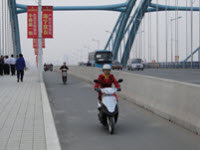
Aug 29, 2013 | News
A new report published by ARRB Group examines issues that are thought to be preventing the uptake of ‘Safe System’ infrastructure in low- and middle-income countries.
The report is a summary of a workshop held in Bangkok, Thailand as part of the 2012 GRSP / iRAP Asia Pacific Workshop involving delegates from governments and road authorities around the Asia-Pacific region. The aims of the workshop were to raise awareness of Safe System infrastructure treatments, such roundabouts, safety barriers and pedestrian crossings, and explore factors impeding their implementation.
Although cost was often cited as an impediment, factors relating to design, user compliance and maintenance were also considered to be very important.
The outcomes of the workshop will help road authorities, researchers and industry understand ways in which the uptake of highly effective infrastructure treatments can be accelerated. The information will also be used to update the Road Safety Toolkit.

Aug 19, 2013 | News
We are looking for a PHP / JavaScript developer, who is dedicated to their craft, writes code to be proud of and can hit the ground running.
You will be a part of a small creative team that is responsible for all aspects of the ongoing software development from the initial specification, through to developing, testing and launching.
For more information, take a look at: http://www.linkedin.com/jobs?viewJob=&jobId=6867817.
Aug 1, 2013 | Report, Resources
Download Click the file icon above to download the file. 2013 EuroRAP Final report – Ukraine Safer Road Corridors Investment Plan (English)
Aug 1, 2013 | Report, Resources
Download Click the file icon above to download the file. 2013 ARRB Research report (ARR 383) – Safe System infrastructure

Jul 17, 2013 | News
Following the completion of road inspections by the ‘Orange Angel’ and the ‘Brazilian Angel’, assessments are now being carried out for more than 4,000km roads in the State of Sao Paolo, Brazil.
Initially, Star Ratings and Safer Roads Investment Plans will be produced for nine high-priority World Bank-financed corridors.
As part of the project’s capacity building and communications strategy, local stakeholders and World Bank representatives recently participated in a workshop on the iRAP methodology and expected outcomes of the project.

Jul 17, 2013 | News
Hundreds of participants from around the world visited Beijing for the Road Safety on Four Continents (RS4C) conference, the 16th in the series.
ChinaRAP played a high-profile role at the conference, including by participating in “Sharing Road Safety – International Workshop in Scientific Safety Estimation” (co-sponsored by Research Institute of Highway of China, Beijing University of Technology, ITF/OECD, TRB, VTI) and the “Sharing solutions for transitioning economies” workshop (co-sponsored by GRSF and the World Bank).
ChinaRAP is currently actively supporting government, World Bank and Asian Development Bank projects in Anhui, Guizhou, Henan, Liaoning, Shaanxi and Yunnan.
The event also provided the opportunity for high-level discussions with Ministry of Transport and the Ministry of Public Security officials.

Jul 17, 2013 | News
I am delighted to announce that Gary Liddle, the Chief Executive of VicRoads (an Australian state government road agency), has joined the iRAP Board.
Gary’s and VicRoads’ efforts, including delivery of the billion-dollar Transport Accident Commission (TAC)-funded Safer Road Infrastructure Program, have helped make Victoria a world-leader in road safety. In 2012, Victoria achieved its lowest-ever number of road deaths (282 fatalities / 5 per 100,000 population).
Gary also brings a wealth of experience from his work with Austroads, ARRB Group, the World Road Association (PIARC) and REAAA.
When it comes to road infrastructure, lives are not saved until safety treatments are built. We can eliminate 1- and 2-star roads and celebrate the opening of new 4- and 5-star roads.
With large-scale safety programs already saving lives in Victoria, Gary’s practical experience will help guide our work globally as we partner with road authorities, development banks and auto-clubs to achieve our vision of a world free of high-risk roads.
Rob McInerney
CEO, iRAP

Jul 16, 2013 | News
The Korea Transport Institute (KOTI) and iRAP have signed a Centre of Excellence agreement, which will support efforts in the development of road infrastructure safety in Korea as well as in the international community.
Speaking at a special seminar, KOTI Pesident, Gyenchul Kim, said: “To achieve high performance on road safety, all road safety factors including road users, vehicles, and road infrastructure should be safer than now. We are showing a high level of seat belt usage compared to 20 years ago. We are also making vehicles which compete with the other safer cars around the globe. Now is the time to make road infrastructure safer in the world.”
KOTI joins four other iRAP Centres of Excellence: ARRB Group, the Malaysian Institute of Road Safety Research (MIROS), TRL, MRIGLobal and the Instituto Mexicano del Transporte.
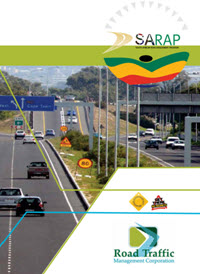
Jul 16, 2013 | News
RMTC, the lead agency for road traffic management in South Africa, has established the South African Road Assessment Program (SARAP) to help prevent the more than 14,000 road deaths that occur each year in the country.
Speaking at a major launch event, acting CEO, Collins Letsoalo said the South Africa “free of high risk roads” initiative will include:
- Assessment and performance tracking on 36,000km of road where over 50% of fatalities in South Africa occur.
- Targeted investment in proven high return treatments across the country.
- The elimination of one and two star roads by 2020.
The initiative will draw on the co-operation and dedicated support of stakeholders such as the Department of Transport, Ministry of Finance, SANRAL, SARF, Road Accident Fund, SALGA, South African Police Service, Universities and CSIR.
SARAP will also involve capacity building, evaluations, communications and employment generation efforts.
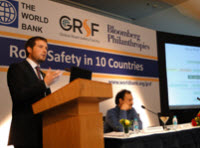
Jul 16, 2013 | News
‘Designing safer roads for all’ was the theme of a week-long road engineering safety training course held in Bangalore, India.
Participants from across India and nearby countries had the opportunity to learn about Star Rating road designs, crash investigations, road safety audits, black spot management, engineering treatments for run-off, head-on and intersection crashes, and designing for vulnerable road users and mixed traffic.
The course was closely linked with iRAP assessments, which now cover some 6,500km of roads in seven Indian States. More than 100 engineers have participated in iRAP-specific training since 2010.
Importantly, investments to improve many of the roads assessed with iRAP tools have been locked into World Bank-financed projects, estimated to be worth more than USD 3.5 billion. Designs for almost 30% of the roads assessed have already been Star Rated, helping to ensure that safety is built-in to the plans prior to construction.
The course culminated in a site visit to the Mysore safe demonstration corridor which will soon be upgraded. Visit our Flickr page to see photos of the visit.
The training course was an initiative of the GRSF and provided as part of the Bloomberg Philanthropies global road safety program.

Jul 15, 2013 | News
In the first report of its kind, AMZS have brought together results from all RAP protocols for roads in Slovenia.
Risk Mapping results on 6,500km of the road network for the period 2006-2011 showed that motorways and expressways are the safest road type, with an average fatal and serious crash rate 6 times lower than main roads and 8 times lower than regional roads. Just 1% of the network fell into the higher risk categories compared to 23% of main roads and 31% of regional roads. Performance tracking over time showed a significant improvement in the proportion of the network rated higher risk compared to 2006-2008.
The report includes results from pilot road inspections covering 270km. Over 90% of the expressway routes achieved a 4-star rating, with a lack of paved shoulders identified as a key roadside hazard. Main road sections scored much lower, with the majority rated as 1- or 2-stars. Narrow driving lanes, steep embankments and poor junction layout were identified as problem areas.
A detailed Safer Roads Investment Plan on the main road from Ljubljana Kocevje-Petrina showed that improving intersection layout, widening lanes and adding paved shoulders and roadside barriers on just 32km of road would require investment of €2 million and would yield a €16 million return over 20 years, equating to a benefit cost ratio of 7.5.
The full report can be downloaded from: http://eurorap.org/media/182412/EuroRAP_SLO_2012_Eng.zip
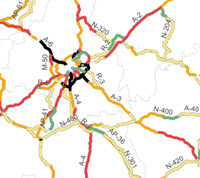
Jul 15, 2013 | News
RACC have published EuroRAP mapping showing national road sections with the highest crash costs.
The research shows that up to 20% of the network (4,700km) bears crash costs over €100,000 per kilometre, while 5% of the network (1,296km) had crash costs greater than €200,000 per kilometre. The study found that just eight roads account for half of the highest cost per kilometre.
The report comes at time of considerable budgetary constraint in Spain, and it is argued that targeted investment on road sections with the highest crash costs will save lives and money.
Currently, while the average crash cost per km on the national road network stands at €64, investment in road maintenance stands at just €38 per km.

Jul 15, 2013 | News
By applying to become an IRF Fellow, you could follow in the footsteps of passionate road safety supporter and member of the ChinaRAP team, Wu Lingtao.
The IRF Fellowship Program enabled Lingtao take up study at Texas A&M University in the United States, meet some of the best international students in the country and network with leaders of the transportation industry.
The International Road Educational Foundation is now accepting nominations for the IRF Fellowship Program – Class of 2015 (starting fall semester, 2014).
The program provides a one-time graduate level scholarship to young professionals from developing countries who have strong academic backgrounds, professional qualifications, leadership potential, and a commitment to return to their respective home countries after graduation.
For more information on how to apply, visit: www.irfnews.org/fellowships.

Jul 15, 2013 | News
To coincide with the first major update of the iRAP methodology since it was pilot-tested in four countries in 2006, we have published a new series of fact sheets.
The 28 fact sheets describe the risk factors (or crash modification factors) used in the models for attributes such as lane width and sidewalk (footpath) provision, and include discussion on key issues and references to published literature. The fact sheets are available at irap.org and on the Road Safety Toolkit.
We are also in the process of updating the existing methodology documents, addressing topics such as the way in which crash initiation modes are handled in the models and how the Star Rating thresholds are set. The documents will be free to download when they’re ready.
In the meantime, if you have any questions about the iRAP methodology, please contact us. We will be happy to answer your questions.
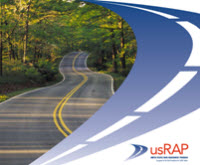
Jul 15, 2013 | News
During a recent webinar the AAA Foundation for Traffic Safety explained how usRAP is transitioning from pilot projects to become an operational program. Having demonstrated through a three-phase pilot period how it can complement existing safety management programs in...
Jun 5, 2013 | News

May 3, 2013 | Espanol news
iRAP fue reconocido por sus contribuciones a la seguridad vial en la ceremonia anual de Premios Americanos de la Región IV de la FIA.
El Director Regional de iRAP, Julio Urzua, fue reconocido por la FIA por su trabajo en la creación e implementación de iniciativas de seguridad vial para el año 2012, reafirmando los compromisos de los clubes de automovilismo de fortalecer la sinergia entre la movilidad y el transporte.
Hasta fines de 2012, se habían llevado a cabo evaluaciones de iRAP en Argentina, Belice, Brasil, Chile, Colombia, Costa Rica, El Salvador, Guatemala, Honduras, México, Nicaragua, Panamá y Paraguay.
May 1, 2013 | Report, Resources
Download Click the file icon above to download the file. 2013 iRAP report – India overview (Phase 2)
May 1, 2013 | Report, Research, Resources
Download Click the file icon above to download the file. 2013 iRAP paper – Relationship between Star Ratings and crash costs: Bruce Highway, Australia
Apr 9, 2013 | News
The 2012 iRAP Asia Pacific Star Performer award recognizes action by the Karnataka State Highway Improvement Program (KSHIP) and the World Bank to ensure that safety is built-in to designs for new roads and major upgrades, prior to construction.
The winners of the 2012 award were announced during the recent Global Road Safety Partnership (GRSP) Asia Seminar and International Road Assessment Programme (iRAP) Workshop in Manila, and a special ceremony will also be held during a Global Road Safety Facility engineering workshop in Bangalore in June.
Karnataka was the first jurisdiction in the region to commit to setting minimum Star Ratings for new road designs.
The commitment is consistent with the Commission for Global Road Safety recommendation that desired design speeds for new roads should be subject to achieving minimum safety ratings.
The steps taken to date include:
- The World Bank initially set a target of three-stars for road safety demonstration corridors included in a loan package. The Government then extended this target to include more than 500km of annuity roads.
- Road safety inspections were carried out and baseline Star Ratings calculated for the existing roads.
- Detailed supporting data, including road crash investigation data, were collected on selected roads to help establish a full understanding of the situation.
- Consulting engineers and road authority engineers used Star Ratings to test the safety impact and suitability of various safety options for the annuity, such as ‘raised pedestrian crossings’.
- Designs were developed based on optimised Star Ratings and which met local design standards and budget and environmental requirements.
- With assistance from ADB, local engineers undertook on-site reviews of countermeasures identified by iRAP for the safe demonstration corridors. This work will shape subsequent designs, but also serve as a guide for other countries implementing iRAP recommendations.
Overall, the annuity road process resulted in designs with significantly better Star Ratings than the existing roads and standard designs.
For example, the percentage of road rated one-star or two-stars for vehicle occupants would be reduced from 86% to 2%. For pedestrians, the percentage of high risk roads would drop from 100% to 12%. It was estimated that the new designs would result in 55% fewer deaths and serious injuries than currently occur.
The work in Karnataka is part of a larger program of iRAP assessments in India, designed to help reduce the estimated 231,000 road deaths that occur each year. During the past three years, almost 6,500km of roads in seven States have been assessed and more than 100 engineers have participated in training. Star Ratings are now being used to help improve the safety of designs on numerous road corridors.
iRAP in India is being delivered in partnership with Public Works Departments and local firms, and is supported by the Global Road Safety Facility and Bloomberg Philanthropies. iRAP’s activities are enabled by funding from the FIA Foundation and the Road Safety Fund.
The annual iRAP Asia Pacific Star Performer award is given to organizations that have embraced the iRAP vision for a world free of high-risk roads. Previous winners come from Malaysia, Vietnam, New Zealand and the Philippines.

Apr 4, 2013 | iRAP Asia Pacific Workshop, Presentations, Resources
The 5th annual iRAP Asia Pacific Workshop will be held on Thursday 4 April, 2013 in Manila.
As in previous years, the workshop will be held as part of the GRSP Asia Road Safety Seminar (2-3 April, 2013). The 2012 event brought together hundreds of people from more than 20 countries.
iRAP workshop participants will include road authority engineers, policy makers, automobile association staff, researchers and consultants. People will have the opportunity to:
- share their experiences in undertaking iRAP assessments
- learn about the latest iRAP model and software developments (http://vida.irap.org)
- find out about our the online training platform, RAPcapacity (http://capacity.irap.org)
- hear about innovative data collection and analysis techniques
- get the latest information on infrastructure safety techniques.
For more information, visit www.grspasia.org or email greg.smith@irap.org.
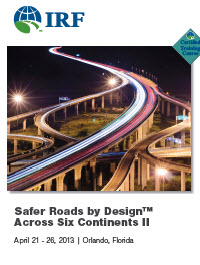
Apr 2, 2013 | Espanol news
Para aquellas autoridades que hayan completado una evaluación iRAP, el seminario “Seguridad vial a través de seis continentes”, de IRF, les puede ayudar a poner en práctica los planes para salvar vidas.
El programa de capacitación Vías Más Seguras a Través del Diseño, de IRF, es reconocido como uno de los más completos del mundo, y ayuda a las autoridades viales a comprender qué pueden hacer para cumplir el compromiso de reducir muertes durante la Década de Acción para la Seguridad Vial.
El programa de capacitación se focaliza en cuatro temas principales: seguridad en las veredas (aceras), seguridad en las zonas de trabajo, seguridad del usuario vulnerable y auditorías de seguridad vial.
Para mayor información sobre el siguiente programa, que se llevará a cabo del 21 al 26 de abril de 2013 en Orlando, Estados Unidos, visite: http://www.irfnews.org/home/ o comuníquese por correo electrónico con: Mike Dreznes (mdreznes@irfnews.org).

Apr 2, 2013 | Espanol news
El 5to. Taller Anual de iRAP Asia Pacífico se realizará el jueves 4 de abril de 2013 en Manila.
Como en años anteriores, el taller se llevará a cabo como parte del Seminario de Seguridad Vial en Asia, de GRSP, (2 y 3 de abril de 2013). El evento de 2012 congregó a cientos de participantes de más de 20 países.
El Taller de iRAP está dirigido a los ingenieros de caminos que laboran en las autoridades de transporte, a los formuladores de políticas, al personal de las asociaciones de automovilismo, investigadores y consultores. Los participantes tendrán la oportunidad de:
• compartir sus experiencias en la realización de evaluaciones iRAP
• aprender acerca del último modelo iRAP y desarrollos de software (http://vida.irap.org)
• conocer nuestra plataforma de capacitación en línea, RAPcapacity (http://capacity.irap.org)
• enterarse de las técnicas innovadoras para la recolección y análisis de datos
• obtener la última información sobre técnicas para la seguridad de infraestructuras.
Para mayor información, visite www.grspasia.org o envíe un mensaje electrónico a greg.smith@irap.org.


































